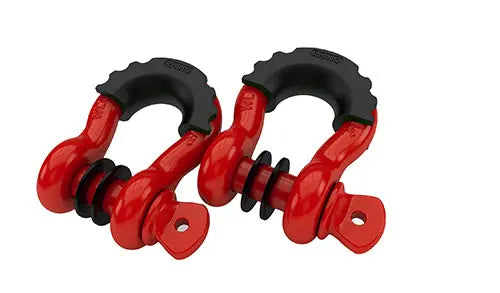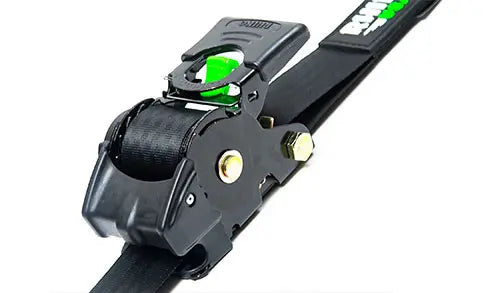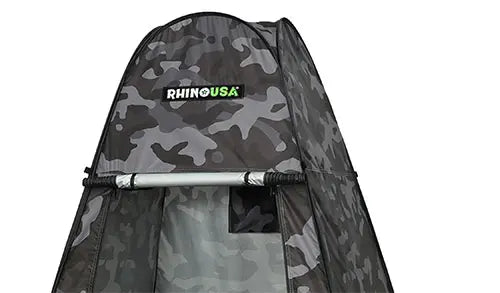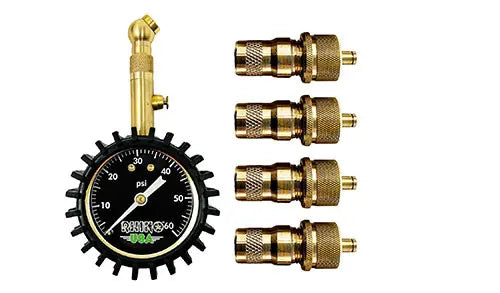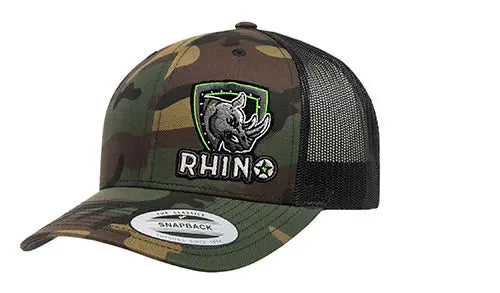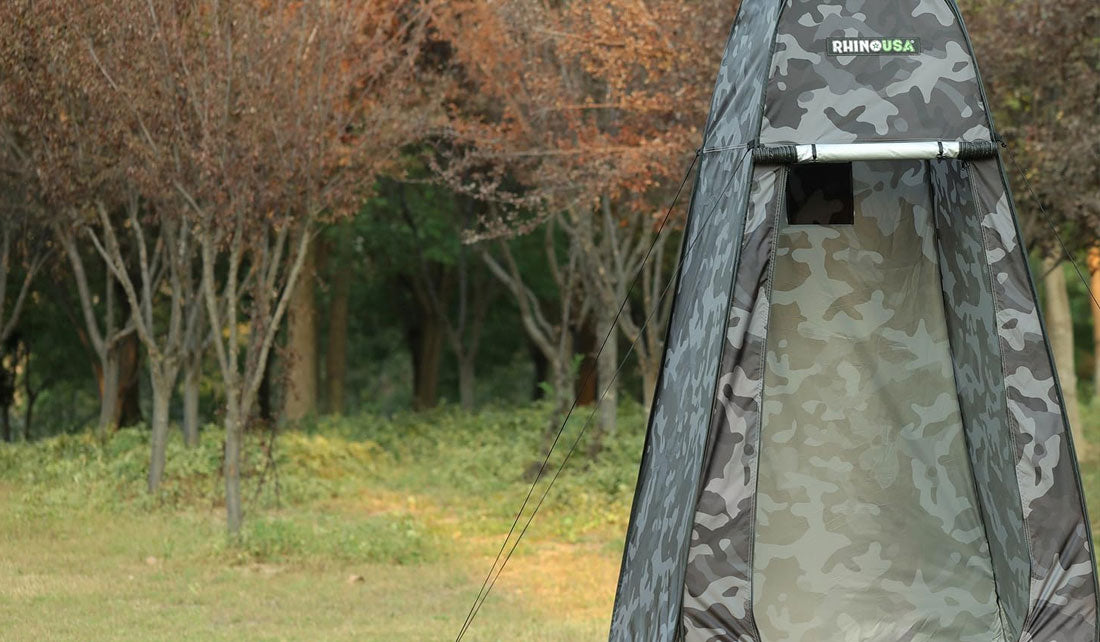Camping is a great way to connect with nature and enjoy some time away from the hustle and bustle of everyday life. However, staying clean during your outdoor adventure is essential, as it can help maintain your overall health and well-being. While full showers may be unavailable while camping, there are multiple ways to freshen up and keep yourself feeling refreshed.
From bathing in natural water sources to using portable camp showers, there are various methods that campers can utilize to maintain personal hygiene. It is crucial to find a solution that works for you and your camping situation, ensuring you stay clean and comfortable during your trip. In this article, we will introduce five different ways to shower when camping outdoors, providing practical tips that you can apply during your next adventure.
So, join us as we explore a variety of options for keeping clean and refreshed in the great outdoors. You'll discover effective methods that cater to different preferences, environments, and camping styles. Stay tuned as we take a closer look at these practical and effective showering solutions for your outdoor experiences.
1. Showering with an Outdoor Pop-Up Privacy Tent and Portable Shower
Pop-up privacy tents offer a convenient and private solution for showering when camping outdoors. Paired with a portable shower, you'll have a comfortable and efficient way to maintain cleanliness during your camping trip.
Pop-up privacy tents are lightweight, easy to set up, and provide a dedicated space for showering. They offer privacy and help contain water within the designated area, making it feel more like a traditional bathroom experience. To set up your pop-up tent, follow these steps:
- Choose a level, well-draining area near your campsite.
- Unfold the tent. Most pop-up tents spring into shape automatically once removed from their carrying case.
- Secure the tent with stakes and guylines, if necessary.
Portable showers come in various styles such as gravity-fed, pressurized, and battery-powered. When choosing a portable shower, consider factors like:
-
Water pressure: Gravity-fed options rely on the weight of water for pressure, while pressurized showers use a pump system. Battery-powered options usually provide the highest pressure.
-
Heating method: Solar-powered and manually heated options are available, depending on your preference and access to sunlight.
-
Ease of use: Look for a shower that's simple to fill, operate, and clean.
Once you have chosen your shower, follow these steps to prepare and use it:
- Fill your portable shower with water. Most portable showers have a capacity of 3 to 5 gallons, sufficient for a quick shower.
- If using a solar-heated option, place it in a sunny spot for several hours for optimal heating.
- Hang the shower inside the pop-up tent using the provided hanging mechanism or hooks.
- Turn on the shower nozzle and enjoy a refreshing cleanup.
- Lather up with biodegradable soap to minimize environmental impact.
After showering, be sure to properly dispose of your shower water according to campsite guidelines and pack away your pop-up tent and portable shower for future use.
By using a pop-up privacy tent and portable shower when camping outdoors, you can enjoy a comfortable and private showering experience while respecting the environment and maintaining good hygiene.
2. The Sponge Bath: A Simple and Water-Saving Technique
A sponge bath is an efficient and water-saving method to stay clean while camping outdoors. It requires a minimal amount of water and some basic supplies like a washbasin, camp soap, sponge, and a towel. This method is particularly useful when access to water is limited or when you're trying to conserve water during your camping trip.
To begin your sponge bath, you should start by safely heating water in a camp kettle or other appropriate container. Be cautious when handling hot water; gently submerge your finger or use another method to check the water temperature before you start. It is essential to use warm water for a comfortable and effective bathing experience.
Once the water has reached a desirable temperature, pour it into your washbasin. A balanced water temperature should be 115°F (46°C) or less, as you want the water to be warm but not too hot. It is crucial to separate the water into two basins or containers, one for washing and the other for rinsing. This helps to ensure a thorough and hygienic cleansing process.
For a successful sponge bath, follow these steps:
-
Choose a suitable camp soap: Select a soap that is easy to rinse away, preferably one that is eco-friendly and biodegradable, to minimize the impact on the environment.
-
Lather the soap: Dip your sponge into the washing water and add soap. Lather the soap and wipe your body down using the sponge. Work on one area of your body at a time, starting from your face and working your way down to your feet.
-
Rinse the soap: After washing each area, rinse the sponge in the rinsing water and gently remove the soap from your body with the damp sponge. Be sure to rinse the sponge thoroughly between uses to avoid spreading soap residue.
-
Dry off: Use a clean, dry towel to pat yourself dry after rinsing each body part. Avoid rubbing the skin, as this can cause irritation, especially after a long day of outdoor activities.
-
Dispose of the used water: Once you have completed your sponge bath, dispose of the used water in a responsible manner, away from any water sources, plants, or animal habitats.
By following the aforementioned instructions, you can effectively maintain your hygiene while camping with the simple and water-saving technique of a sponge bath.
3. Embrace Natural Bathing: Using Lakes, Rivers, or Streams (Leave No Trace Principles)
Natural bodies of water, such as lakes, rivers, and streams, offer an opportunity for campers to clean themselves without the need for modern showers. Apart from reducing the need for water-heavy equipment, embracing natural bathing is an eco-friendly choice that allows you to connect with nature. To minimize your impact, remember to follow Leave No Trace principles.
One important aspect to consider when using a natural body of water for bathing is the use of soap. If necessary, only opt for biodegradable soap. Regular soaps contain chemicals that can harm aquatic life and disrupt the ecosystem. Avoid using soap directly in the water source. Instead, fill a container with water, take it at least 200 feet away from the water source, and use it to lather up before rinsing off with clean water.
When bathing in a lake, river, or stream, be conscious of minimizing disturbance to wildlife. Choose a spot away from popular fishing or swimming areas, as well as nesting or breeding sites. In addition, avoid taking a dip in shallow and slow-moving water, as it is more prone to contamination. Fast-flowing water can help disperse any possible contaminants, reducing the risk of polluting the area.
To minimize your impact on the environment further, follow these simple guidelines:
- Avoid trampling on vegetation, and choose an established path to access the water.
- Use a quick-drying towel or rinse off with water from your container.
- Dispose of your used water in already disturbed areas away from the water source.
By following these Leave No Trace principles during your natural bathing experience, you can ensure that your presence has minimal ecological impact. Embracing natural bathing not only enables you to feel refreshed but also allows you to actively contribute to the preservation of the environment for future generations to enjoy.
4. The Solar Shower: Eco-Friendly and Convenient
A solar shower is a great solution for staying clean while camping outdoors. Not only are solar shower bags environmentally friendly, but they also provide a convenient way to enjoy a warm shower at your campsite. Here, we'll guide you through the process of using a solar shower, from setting it up to enjoying that refreshing, sun-heated cleanse.
Solar shower bags work by using the sun's energy to heat the water stored in the bag. Made from durable materials, these bags typically have a dark surface to efficiently absorb sunlight and convert it into heat. The heated water can then be used for a comfortable shower in the great outdoors.
To prepare your solar shower, first locate a water source to fill the bag. A nearby lake, stream, or even a water container will suffice. Once your solar shower bag is filled with water, close it securely and place it in a sunny area. The bag will take about 3 hours to heat the water up to a suitable temperature, depending on the sunlight intensity and the bag's capacity.
Here are some general steps to follow when using your solar shower:
-
Find a suitable location: Choose an area that offers privacy and has a level surface for hanging the bag.
-
Hang the solar shower bag: Use a sturdy branch, pole, or another hanging mechanism to suspend the bag above the ground. Make sure it hangs high enough to allow the water to flow freely from the hose.
-
Adjust the water flow: Before starting your shower, check the water's temperature by releasing a small amount of water from the hose. Many solar shower bags come with an adjustable nozzle, allowing you to control the flow.
-
Enjoy your warm shower: Stand under the hose and let the sun-heated water refresh and rejuvenate you.
Remember, the duration of your shower will depend on the solar shower bag's capacity. For example, a 20-liter bag can provide you with a shower lasting approximately 7 minutes.
In conclusion, a solar shower is an eco-friendly, convenient, and practical solution for maintaining hygiene during your outdoor adventures. So, next time you're planning a camping trip, consider investing in a solar shower bag for a comfortable and sustainable showering experience.
5. The No-Rinse Camp Wipes Solution
Camp wipes are a convenient and effective solution for staying clean while camping, especially during short trips. These wipes allow you to maintain personal hygiene without needing access to shower facilities. To use camp wipes properly and minimize their environmental impact, it's essential to choose biodegradable options and use them responsibly.
When using camp wipes, focus on targeted cleaning. This means concentrating on areas prone to dirt and odor, such as your face, underarms, and feet. Here's a step-by-step guide on how to use camp wipes for effective clean-up:
-
Choose the right camp wipes: Opt for biodegradable, fragrance-free, and alcohol-free wipes to reduce irritation and ensure they break down naturally when disposed of properly.
-
Pack a sufficient amount: Bring enough wipes for your trip, considering the duration and your personal hygiene needs.
-
Store them properly: Keep your camp wipes in a resealable bag or container to prevent them from drying out or getting contaminated.
-
Clean targeted areas: Use a separate wipe for each area of your body, like one for your face, another for your underarms, and so on. This way, you'll avoid cross-contamination and maintain a higher level of hygiene.
-
Dispose of responsibly: After using your camp wipes, pack them in a sealed trash bag and carry them back home to throw away. Do not leave them in nature, even if they are biodegradable.
Remember, camp wipes are a practical solution for maintaining personal cleanliness during your outdoor adventures. By choosing biodegradable wipes and using them responsibly, you can enjoy the benefits of staying fresh while minimizing your impact on the environment.
Conclusion
In this article, we've discussed five methods for showering while camping outdoors: 1) using a solar shower bag, 2) taking advantage of natural water sources like waterfalls and lakes, 3) utilizing RV showers, 4) installing a portable camp shower, and 5) staying fresh with wet wipes. These diverse options cater to various camping styles and conditions.
To maintain cleanliness and comfort during your camping trip, consider packing essential items like towels, biodegradable soap, and a washcloth or sponge. Be mindful of the environment by using eco-friendly products and disposing of waste responsibly. Don't forget to dry off thoroughly to stay warm and avoid catching a cold.
Ultimately, the best camping shower method depends on your individual needs and preferences. Consider factors such as location, available resources, privacy, and convenience. Evaluate these aspects to determine which option best suits your camping style. With the right shower solution in place, you'll be able to focus on enjoying the beauty of nature and cherish your outdoor experience.

